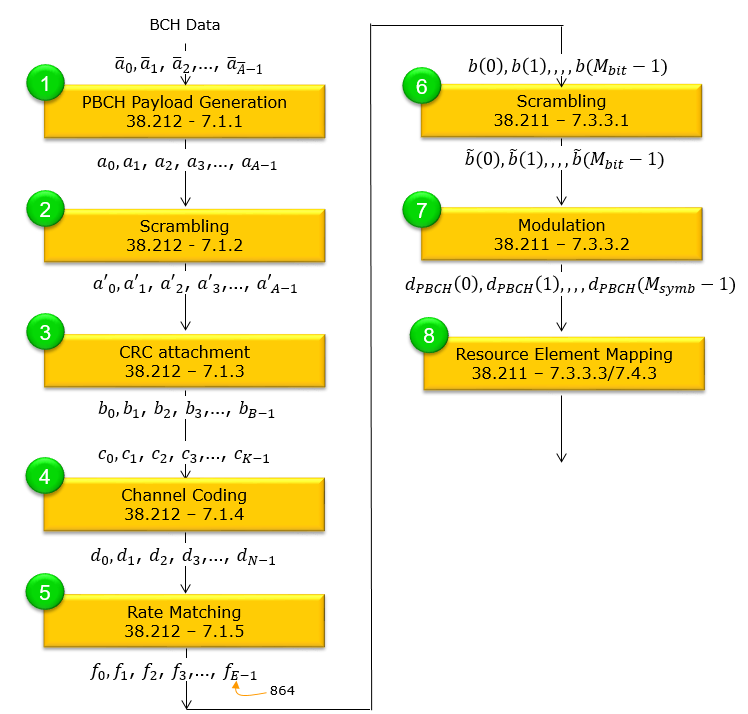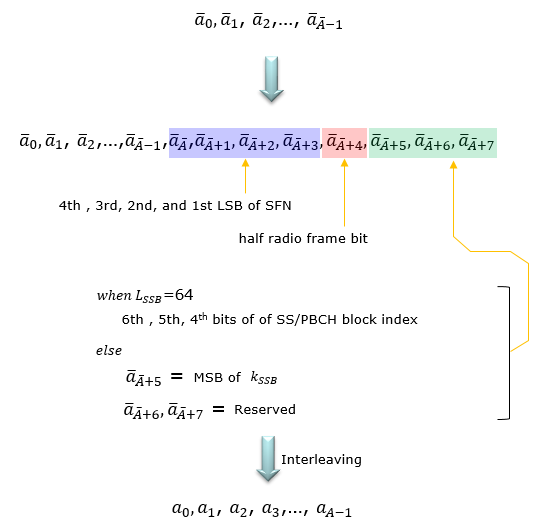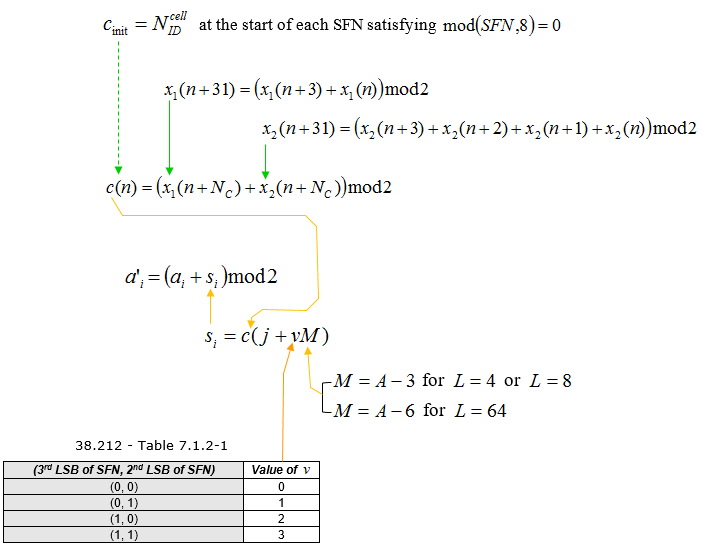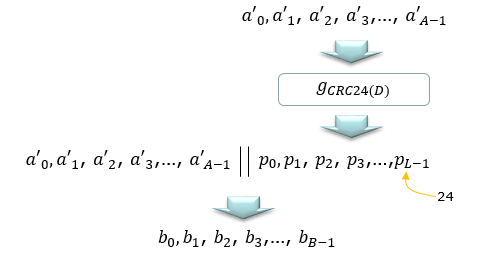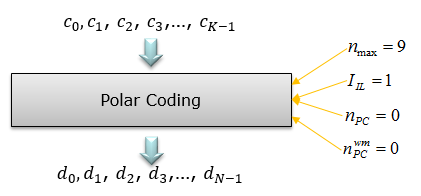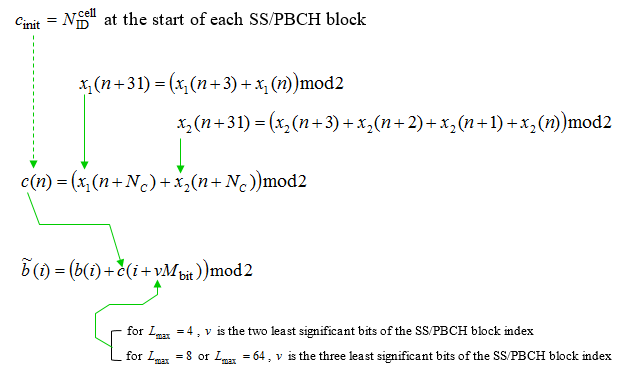|
|
||
|
The PBCH Transport Process encompasses a series of steps to prepare and transmit the Physical Broadcast Channel (PBCH) information. The PBCH is a key component in cellular communication networks, particularly in LTE and 5G systems. It serves as the primary channel through which a base station (eNodeB in LTE, gNodeB in 5G) transmits MIB to UEs. The PBCH carries crucial information that a UE needs to decode other broadcast information and to establish a connection with the network.
PBCH Transport ProcessFollowing diagram illustrates the PBCH Transport Process in a cellular communication system, detailing the sequence of steps involved in preparing and transmitting the PBCH from gNB to UE
Followings are short descriptions of each of the steps illustrated above. I would not explain much in words for this process and I don't think I can make you understand the details of this process just by words. The purpose of following description (illustrations) is to give you high level picture of the algorithm and let you know of what kind of lower layer, higher layer parameters are involved in each of the step. (1) PBCH Payload GenerationThe following illustration outlines the PBCH Payload Generation process, a crucial initial step in the PBCH Transport Process within cellular networks like 5G NR. This process is instrumental in creating the payload that will be transmitted over the Physical Broadcast Channel.
The BCH data sequence begins with bits labeled from ã0 to ã(A-1). This sequence is then augmented with additional bits that encode specific system information:
After these bits are inserted, an interleaving process is applied, reordering the sequence into a0 to a(A-1), which completes the payload generation phase ready for subsequent transmission steps. (2) ScramblingThe image details the scrambling process for cellular communication data, which is a critical step in the PBCH Transport Process. The process begins with the generation of an initialization sequence cinit that is dependent on the cell ID NcellID and the System Frame Number (SFN). The sequence is specifically generated at the start of each SFN where mod(SFN, 8) equals 0.
The scrambling sequence c(n) is formulated using two sequences x1(n) and x2(n). These sequences are recursively updated using the relationships:
The data bit ai is scrambled with the bit si from the scrambling sequence c(n), resulting in the scrambled bit a'i = (ai + si) mod 2. The value of si is derived from the pseudo-random sequence generated by c(j + vM), where M is defined as A - 3 for L = 4 or L = 8, and A - 6 for L = 64. The accompanying table maps the third and second LSB of the SFN to the value of v, which influences the pseudo-random sequence generation:
This scrambling ensures the transmitted signal's clarity, distinguishing it from noise and other signals for precise reception and decoding. (3) CRC AttachmentFollowing illustrates the CRC Attachment process, which is the third step in the PBCH Transport Process.
A sequence of scrambled bits is represented as a'0, a'1, a'2, ..., a'A-1. A CRC polynomial, represented as GCRC24(D), is applied to this data sequence, producing a set of CRC bits p0, p1, p2, ..., pL-1, with L being the length of the CRC which is 24 bits. These CRC bits are then appended to the original data sequence, resulting in an concatenated data string a'0, a'1, a'2, ..., a'A-1 | p0, p1, p2, ..., pL-1. This appended sequence serves as a checksum for error detection at the receiver's end. The combined sequence, now including the CRC, is denoted as b0, b1, b2, ..., bB-1. The CRC attachment is essential for maintaining data integrity during transmission and is a common practice in digital communication systems for error detection and correction. (4) Channel CodingFollowing diagram presents the Channel Coding step, which is the fourth stage in the PBCH Transport Process.
It begins with a sequence of bits, represented as c0, c1, c2, ..., cK-1, which are then fed into a Polar Coding scheme. Polar Coding transforms the original bits into a new set of coded bits that have properties making them more robust against errors over a noisy communication channel. Parameters such as nmax = 9, IL = 1,npc = 0 and nwmpc = 0 are related to the specific configuration of the Polar Coding process. The output from the Polar Coding block is a new sequence of coded bits d0, d1, d2, ..., dN-1, which are ready for the subsequent steps in the transmission process. This encoded sequence is designed to be more resilient to the effects of noise and interference when transmitted over the air interface. (6) ScramblingThe image illustrates the scrambling process which is step six in the PBCH Transport Process, essential for data preparation in cellular networks
NOTE : Lmax is the maximum number of SS/PBCH blocks in an SS/PBCH period. This value is determined by subcarrier spacing and frequency range. See this table to see the specific Lmax value for each cases.
It begins with the initialization of the sequence cinit based on the cell's NIDcell at the start of each SS/PBCH block. Two sequences, x1(n) and x2(n), are used to generate the scrambling sequence c(n). These sequences are updated for each n using a linear feedback shift register, with updates performed as follows:
The data bits b̃(i) are scrambled by XORing with the bits from the sequence c(i + vMbit), where Mbit is a variable that depends on the length Lmax of the SS/PBCH block index:
This step is crucial to ensure that the transmitted signal is robust against interference, enabling accurate decoding by the receiver. (7) ModulationThe image depicts the Modulation process
The process starts with a binary sequence b̃(0), b̃(1), ..., b̃(Mbit - 1). This binary sequence is then modulated using QPSK, which maps every two bits of the binary sequence to one complex number symbol, thereby creating a complex number sequence dPBCH(0), dPBCH(1), ..., dPBCH(Msymb - 1). QPSK is a type of modulation that is particularly efficient in terms of spectrum usage because it transmits two bits per symbol, which is represented as a complex number. After modulation, the data is represented in a format suitable for transmission over a radio frequency channel, with the sequence now prepared to be mapped onto the resource elements of the carrier frequency. (8) Resource Element MappingRefer to Frequency Domain Allocation of SS Block page. RRC ParametersThe main purpose of PBCH is to carry(broadcast) MIB. See Master Information Block section for the details of MIB.
Reference[1]
|
||
